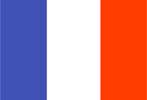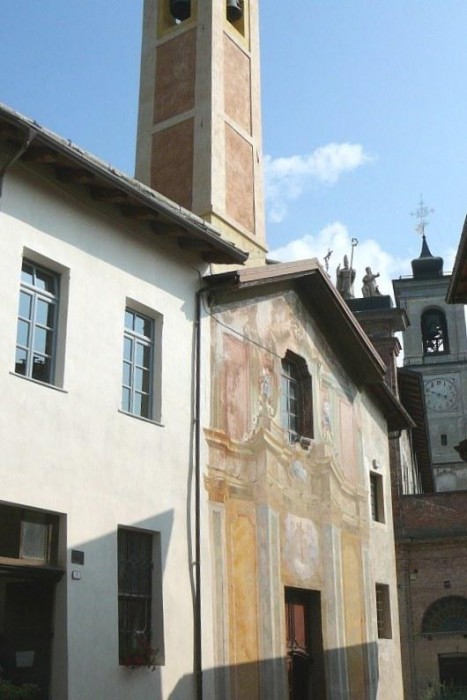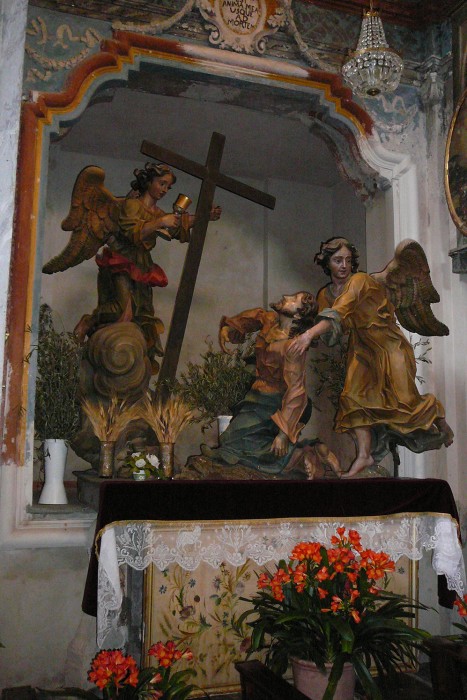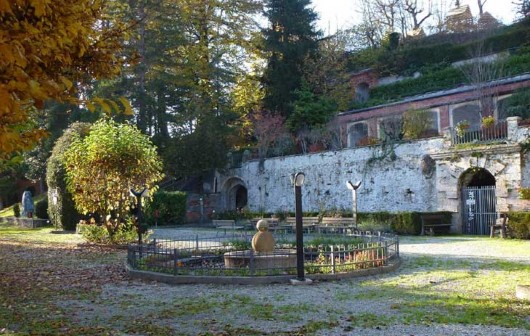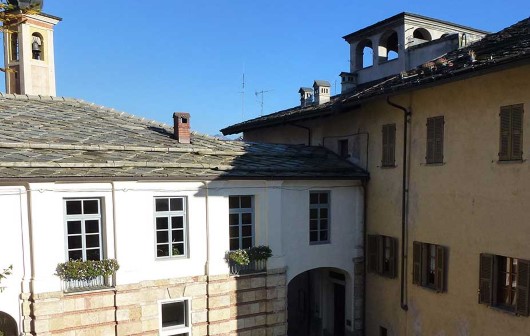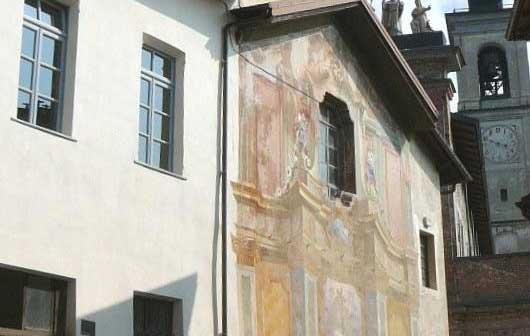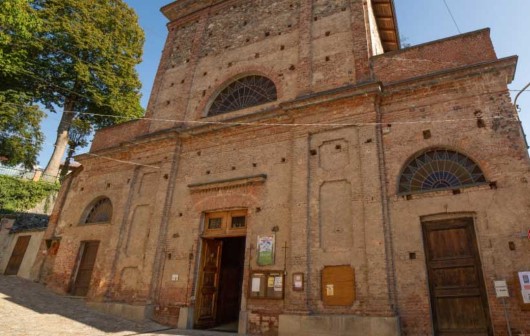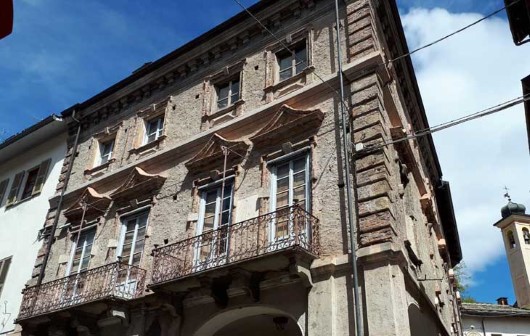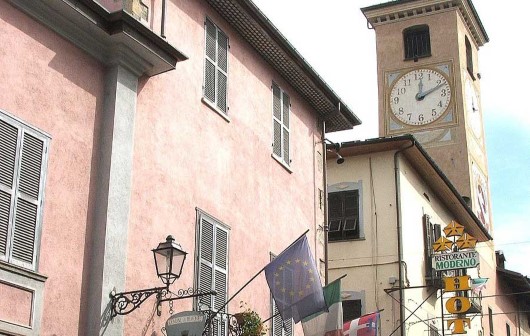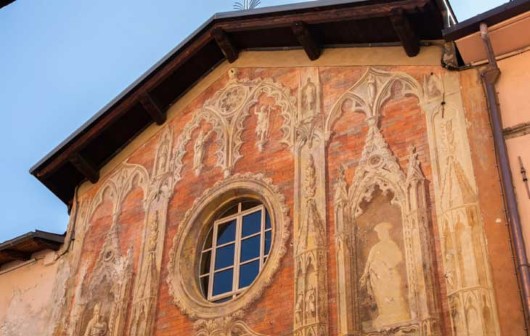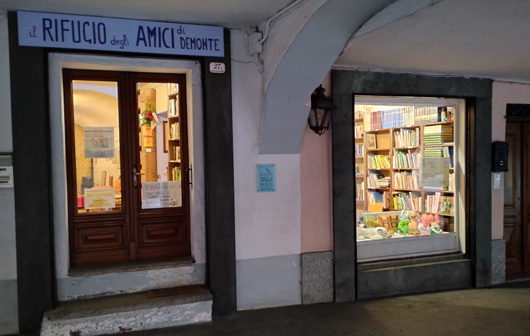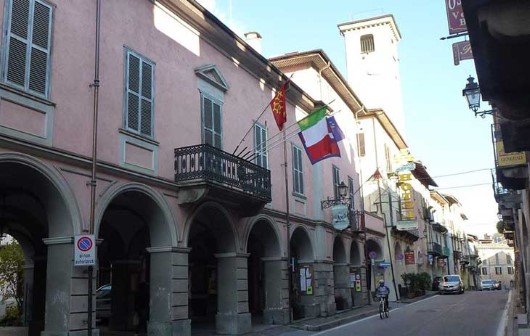Church of the Holy Cross - XVI Century
The Confraternity of the Holy Cross and of St. Sebastian was established In 1540 so presumably the church was build approximately at this date.
The simple gabled facade dating to the second half of the XVIII century is decorated with a fake architectural pattern. In the centre, there is the symbol of the Holy Cross.
Between 1742 and 1744 during the war of the Austrian Succession, when the French and Spanish armies marched towards Cuneo, the church was commandeered and turned into a warehouse for bread and flour.
The high altar was built in 1735, followed in 1766 by that of our Lady of Mount Carmel. In 1768 the stone floor of the choir was laid.
In the decades after 1950, the choir was isolated with a wooden partition and was used for social and playing activities, and ultimately as a warehouse.
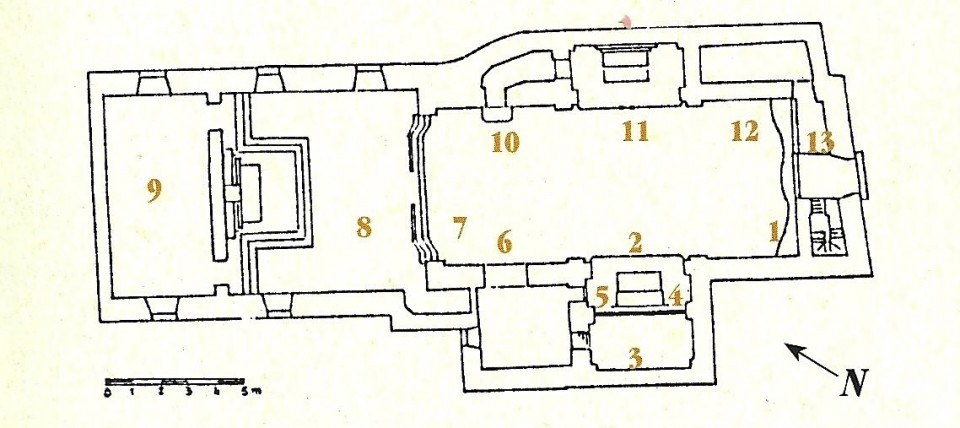
The left side of the church adjoins the Small Mansion, from which it was once possible to attend mass through an XVIII century window.
The interior of the church consists in an oblong painted nave with three bays and two chapels in the middle of each side wall, with a barrel vaulted rectangular presbytery. The choir today is inaccessible.
From the back on the left, there is a noteworthy painting by P.A. Botta, "Humilium Celsitudo" (mid-XVIII century) representing the Washing of feet.
Around 1780 the side chapel (on the left) was redone in order to house the wooden group depicting "Jesus in the Gethsemane garden" by M. Clemente. Nearby there’s a painting (second half of the XVII century) depicting the "Shroud held by the Virgin Mary with St. Joseph, St. Francis, St. Francis de Sales and St. Anthony of Padua."
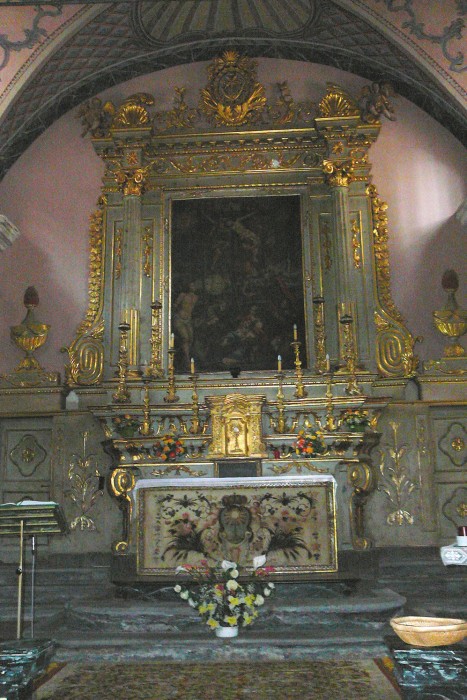
The Presbytery is large and two Corinthian columns, with a XVII century altarpiece depicting the "Deposition from the Cross between St. Roch and St. Sebastian", separates it from the choir.
The altar, remade in 1841, has maintained the carved wooden tabernacle (1735). On the side walls, there are two paintings representing "The Last Supper" (second half of the XVIII century) and "Our Lady with St. Roch and St. Anthony the Great" (1836).
On the right wall, there is the carved walnut pulpit (early XIX century). On its sides, one can see two other paintings by P. A. Botta, "The Annunciation" and "The Virgin with Jesus offering the scapular of the Order of Mount Carmel" (second half of the XVIII century).
Further on there is the brickwork altar dedicated to the Virgin of Mount Carmel, with a wooden tabernacle in a niche and the wooden statue of the Virgin (1732).
The altar is surrounded by four paintings with stucco frames, depicting St. Catherine, St. Simon Stock, St. Anthony of Padua, the archangel Raphael and Tobias.
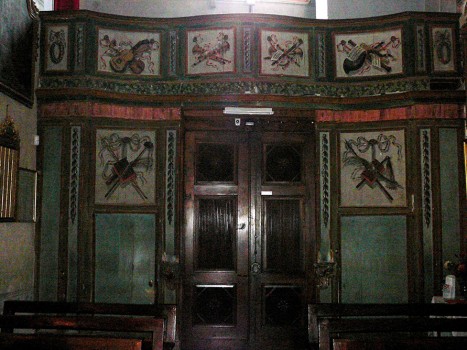
Always along the right wall, there’s another beautiful painting by P. A. Botta, "The Pentecost with the Holy Spirit and Our Lady with the Apostles".
On the entrance wall, there’s the wooden gallery, built between 1764 and 1769, overhanging the wooden portal.
Visit all the Itineraries of Demonte
Parco Borelli
The gardens lie on the Quaternary hill where, from about 1250, stood the Angevin castle where the Bolleris lived from 1377 [ . . . ]
The Galleria Carlo Alberto and the Small Mansion
The Galleria Carlo Alberto (XIX century) links the Borelli mansion to the garden; it was built by Count Giacinto Borelli [ . . . ]
Church of the Holy Cross
The Confraternity of the Holy Cross and of St. Sebastian was established In 1540 so presumably the church was build approximately at this date [ . . . ]
Parish Church of St. Donatus
The church of St. Donatus is first mentioned in a document dated 1332. It became parish church in the course of the XIV century [ . . . ]
Palazzo Bolleris / Borelli
The history of Palazzo Bolleris (now Borelli) starts in 1606 when Marquis Gaspare Bolleris built a mansion at the foot of the feudal castle [ . . . ]
Town Hall Municipal Tower Porticoed Street
The town hall the medieval civic tower and the porticoed street are interesting in particular from a historical and architectural point of view [ . . . ]
Church of St. John the Baptist
The members of the Brotherhood of St. John the Baptist comforted the condemned and assisted their widows and orphans [ . . . ]
About Us
Formed in 2010, pursues, in its institutional purposes, the preservation and development of the historical and architectural [ . . . ]
Contacts
For further information, please don't hesitate to contact us
Association of Friends Demonte



